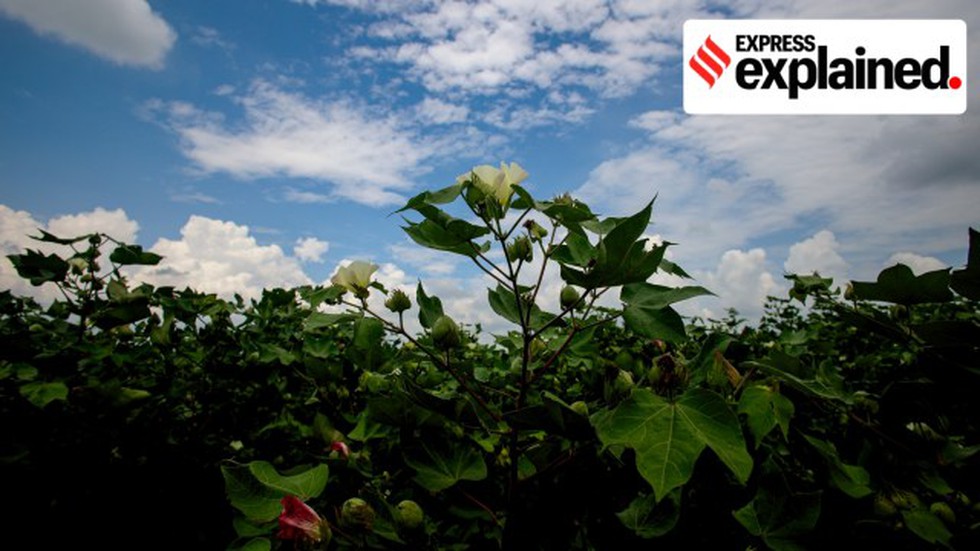
About National Agriculture Code:
- It will cover the entire agriculture cycle, and will also contain a guidance note for future standardisation.
- The code will have two parts. The first will contain general principles for all crops, and the second will deal with crop-specific standards for the likes of paddy, wheat, oilseeds, and pulses.
- The NAC will serve as a guide for farmers, agriculture universities, and officials involved in the field.
- It will cover all agriculture processes and post-harvest operations, such as crop selection, land preparation, sowing/transplanting, irrigation/drainage, soil health management, plant health management, harvesting/threshing, primary processing, post-harvest, sustainability, and record maintenance.
- It will also include standards for input management, like the use of chemical fertilisers, pesticides, and weedicides, as well as standards for crop storage and traceability.
- Crucially, the NAC will cover all new and emerging areas like natural farming and organic farming, as well as the use of Internet-of-Things in the field of agriculture.
- Objectives:
- Create an implementable national code covering recommendations for agriculture practices taking agroclimatic zones, crop type, socio-economic diversity of the country and all aspects of agrifood value chain into consideration;
- To act as an enabler of quality culture in Indian agriculture by providing the required reference to policy makers, agriculture departments and regulators for incorporating the provisions of NAC in their schemes, policies, or regulations;
- To create a comprehensive guide for the farming community to ensure effective decision-making in agricultural practices;
- To integrate relevant Indian Standards with recommended agricultural practices;
- To address the horizontal aspects of agriculture such as SMART farming, sustainability, traceability and documentation; and
- To aid in the capacity-building program organized by agriculture extension services and civil society organisations.
2. EnviStats India 2024

About EnviStats India 2024:
- It is compiled in accordance with the System of Environmental-Economic Accounting (SEAA).
- The current publication which is seventh in the series covers Energy Accounts, Ocean Accounts, Soil Nutrient Index and Biodiversity.
Highlights EnviStats India 2024
- There has been around 72% increase in the number and around 16% increase in area for the Total Protected Area during the period 2000 to 2023.
- The coverage of Mangroves, which is an important sub-ecosystem of the ocean ecosystem has increased around 8% over the years 2013 to 2021.
- The report also includes the taxonomic faunal and floral diversity of India, the status of the Leopard and Snow leopard and information on Genetic Conservation using data from the stakeholder Ministries/agencies.
- Also, the Species Richness of the International Union for Conservation of Nature (IUCN) Red List of Threatened species by taxonomic groups has been compiled using spatial datasets from IUCN.
What is System of Environmental-Economic Accounting?
- It is an agreed international statistical standard for describing the interaction between the economy and the environment, as well as the stocks and changes in stocks of environmental assets
- It aims to integrate perspectives from other disciplines and, where relevant, provide an improved body of information for environmental economic accounts.
- There are two sides of SEEA–the SEEA-Central Framework (SEEA-CF) and the SEEA-Ecosystem Accounting (SEEA-EA)
- SEEA-Central Framework: It focuses on the individual components of the environment that provide material and space for all economic activities.
- SEEA-Ecosystem Accounting: It is a complementary framework of SEEA-CF and constitutes an integrated and comprehensive statistical framework for organising data about habitats and landscapes, measuring the ecosystem services, tracking changes in the ecosystem assets and linking this information to economic and other human activity.
3. Fluorescent Nano-Diamond

About Fluorescent Nano-Diamonds:
- These are nanometre-sized diamonds made of carbon nanoparticles.
- Properties
- They are produced in a high-temperature and high-pressure
- FNDs are stable under light and aren’t toxic to living things.
- FNDs don’t blink when irradiated for a long time.
- Their fluorescence lifespan is greater than 10 nanoseconds (ns) — a relatively long duration — which makes them better than quantum dots.
- FNDs can also be doped to enhance their electrical, magnetic, thermal, and/or optical properties.
- Applications
- They have many applications in high-resolution imaging, microscale temperature sensing, and correlative microscopy, among others.
- Medical Diagnostics: In biology, scientists use FNDs to track cells and their progeny over long periods.
- They can be used as sensors in many high-value industries and strategic sectors.
- FNDs containing Nitrogen-Vacancy (NV)−centres can be used to produce the macroscopic version of the quantum superposition of electrons.
4. New GI Tagged Products
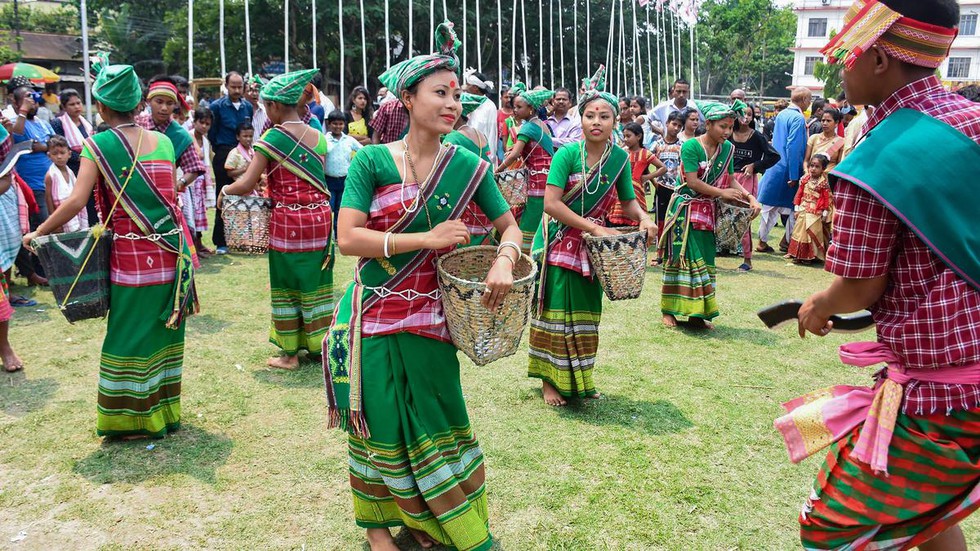
About New GI Tagged Products:
- Unique varieties of rice beer
- ‘Bodo Jou Gwran’: It has the highest percentage of alcohol (about 16.11%) when compared with other varieties of rice beer made by the Bodo community.
- ‘Maibra Jou Bidwi’: It is known locally as ‘Maibra Jwu Bidwi’ or ‘Maibra Zwu Bidwi’, is revered and served as a welcome drink by most Bodo tribes. It’s prepared by fermenting half-cooked rice (mairong) with less water and adding a little ‘amao’ (a potential source of yeast) to it.
- ‘Bodo Jou Gishi’: It is also a traditionally fermented rice-based alcoholic beverage.
- Traditional Food Products
- Bodo Napham’: It is an important and favourite dish of fermented fish prepared anaerobically in a tightly sealed container in a process that requires about two-three months.
- Bodo Ondla’: A rice powder curry flavoured with garlic, ginger, salt, and alkali.
- Bodo Gwkha’: It is locally also known as ‘Gwka Gwkhi’, it’s prepared during the Bwisagu festival.
- ‘Bodo Narzi’: It is a semi-fermented food prepared with jute leaves (Corchorus capsularis), a rich source of Omega 3 fatty acids, vitamins and essential minerals, including calcium and magnesium.
- Bodo Aronai’: It is a small, beautiful cloth (1.5-2.5 meters long and 0.5 meter wide)
5. Akashteer Systems
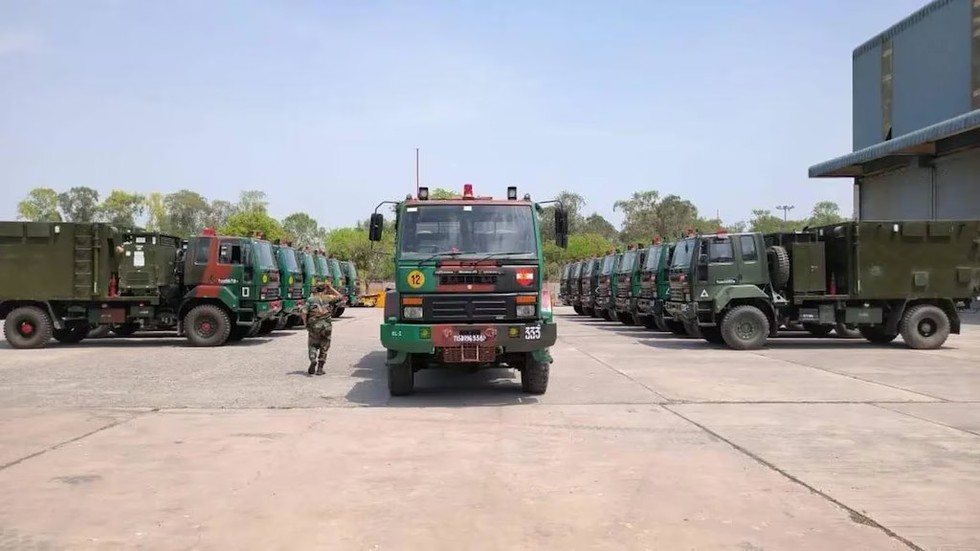
About Akashteer Systems:
- These are advanced Air Defence Control and Reporting Systems (ADCRS) which will serve as a critical asset in safeguarding the country from aerial threats, including missile and rocket attacks.
- It is a sophisticated, integrated control and reporting system designed to neutralize enemy threats swiftly.
- The system is capable of managing all aspects of air defence for the Army, integrating multiple radar systems, sensors, and communication technologies into a single operational framework.
- It provides a real-time battlefield view, allowing military personnel to detect, track, and engage aerial threats such as incoming missiles or enemy aircraft.
- It brings together various surveillance assets, radar systems, and communication nodes, enabling precise coordination of air defence operations.
- It is suitable for a wide range of operational environments.
- It is developed by Bharat Electronics Limited (BEL).
- Significance: This enhances the Indian Army’s ability to monitor airspace and deliver timely responses to any imminent threats.
6. What is Pseumenes siangensis?

About Pseumenes siangensis:
- It is a new species of wasp belonging to the genus Pseumenes.
- The genus Pseumenes belongs to the subfamily Eumeninae, commonly called potter wasps.
- It is primarily distributed across the Oriental region.
- These are solitary wasps identified with their construction of small, pot-like mud structures that they use as nests for their larvae.
- Around 3,795 species of these wasps have been described across 205 genera.
- India has previously reported only one species of the genus, making the recent discovery of Pseumenes siangensis “a significant addition” to the country’s wasp diversity.
- Pseumenes siangensis was discovered in Upper Siang District of Arunachal Pradesh, in the Eastern Himalayas.
- It is named after Siang Valley where it was found.
- At about 30.2 mm in length, the new species differs from others in having specific morphological features and colour patterns.
- It has critical role in controlling pest populations as the larvae primarily feed on caterpillars and other insects.
7. What is Ceres?
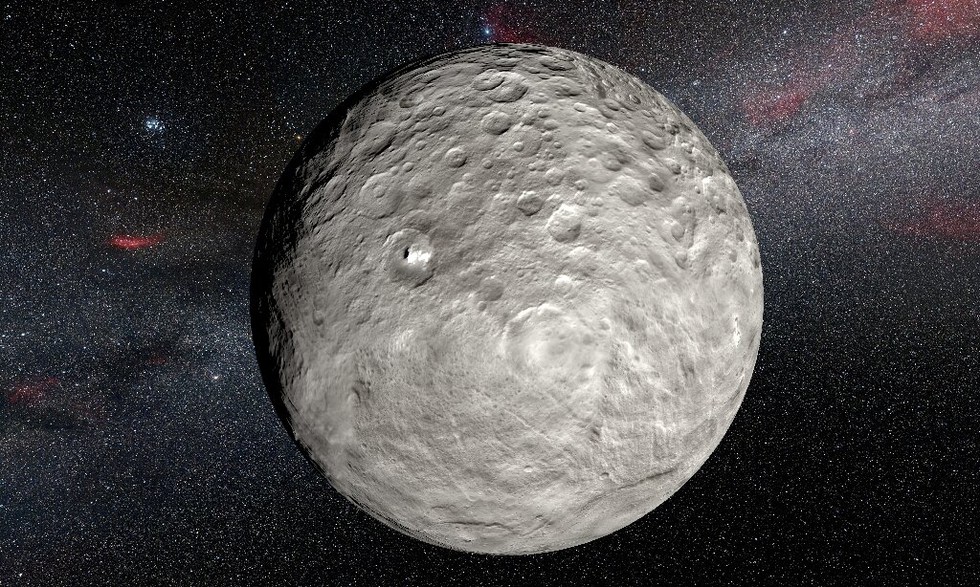
About Ceres:
- It is a dwarf planet and the largest object in the asteroid belt between Mars and Jupiter.
- It's the only dwarf planet located in the inner solar system.
- It was the first member of the asteroid belt to be discovered when Giuseppe Piazzi spotted it in 1801.
- Ceres is named for the Roman goddess of corn and harvests. The word cereal comes from the same name.
- Called an asteroid for many years, Ceres is so much bigger and so different from the rocky neighbors that scientists classified it as a dwarf planet in 2006.
- When NASA's Dawn arrived in 2015, Ceres became the first dwarf planet to be explored by a spacecraft.
- Features:
- With a radius of 296 miles (476 kilometers), Ceres is 1/13 the radius of Earth.
- Ceres is 8 Astronomical Units (AU) away from the Sun. One AU is the distance from the Sun to Earth.
- Ceres takes 1,682 Earth days to make one trip around the Sun.
- As Ceres orbits the Sun, it completes one rotation every 9 hours, making its day length one of the shortest in the solar system.
- Ceres formed along with the rest of the solar system about 4.5 billion years ago when gravity pulled swirling gas and dust in to become a small dwarf planet.
- Ceres is more similar to the terrestrial planets (Mercury, Venus, Earth, and Mars) than its asteroid neighbors, but it is much less dense.
- Ceres probably has a solid core and a mantle made of water ice. Ceres' crust is rocky and dusty with large salt deposits.
What is a Dwarf Planet?
- A dwarf planet is a body, other than a natural satellite(moon), that orbits the Sun and that is, for practical purposes, smaller than the planet Mercury yet large enough for its own gravity to have rounded its shape sustantially.
- The International Astronomical Union(IAU) adopted this category of solar system bodies in August 2006, designating Pluto, the even more remote object Eris, and the asteroid Ceres as the first members of the category.
- Unlike major planets, these bodies are not massive enough to have swept up most smaller nearby bodies by gravitational attraction; they thus failed to grow larger.
- In June 2008, the IAU created a new category, plutoids, within the dwarf planet category.
- Plutoids are dwarf planets that are farther from the Sun than Neptune.
- All the dwarf planets except Ceres are plutoids.
8. What is Motor Neuron Disease (MND)?
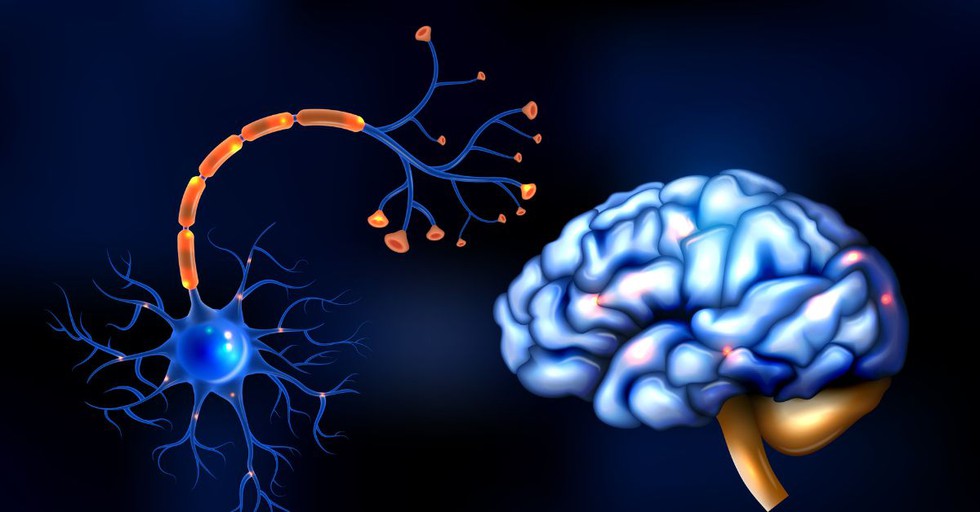
About Motor Neuron Disease (MND):
- It is a rare condition that progressively damages parts of the nervous system.
- This leads to muscle weakness, often with visible wasting.
- MND is also called Amyotrophic Lateral Sclerosis (ALS) and Lou Gehrig's disease.
- Cause:
- MND happens when specialist nerve cells in the brain and spinal cord, called motor neurones, stop working properly and die prematurely. This is known as neurodegeneration.
- Motor neurons instruct the muscles to move by passing on signals from the brain. They play a role in both conscious and automatic movements, such as swallowing and breathing.
- As MND progresses, it can become more difficult to do some or all of these activities.
- Generally, MND is believed to be caused by a combination of environmental, lifestyle, and genetic factors.
- 20% of cases are linked to genetic causes.Half of the genetic cases will be in people who have a family history of MND.
- It mainly affects people in their 60s and 70s, but it can affect adults of all ages.
- Symptoms:
- The symptoms of MND start gradually over weeks and months.
- They tend to appear on one side of the body first and get progressively worse.
- MND often begins with weakness of the muscles in the hands, feet, or voice, although it can start in different areas of the body and progress in different patterns and at different rates.
- People with MND become increasingly disabled.
- Average life expectancy after diagnosis is one to five years, with 10 percent of people with MND living 10 years or more.
- Treatment: There's no cure for MND, but treatment can help reduce the impact the symptoms have on your life.
9. Key Facts about Negro River
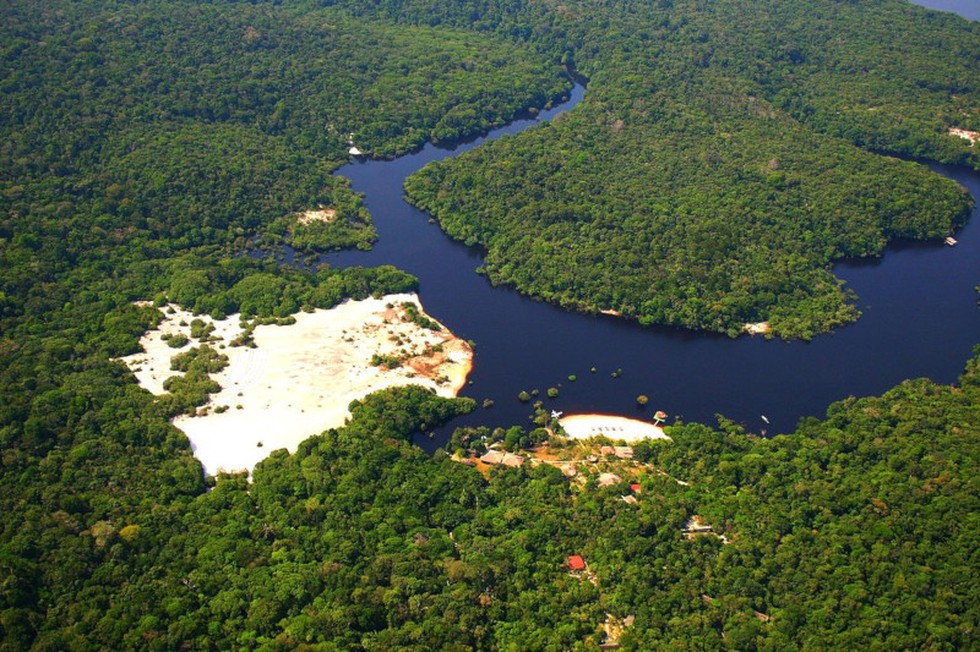
About Negro River:
- The Rio Negro is one of the largest tributaries of the Amazon River.
- It is also one of the world’s largest rivers in terms of discharge.
- Course:
- Origin: It originates in several headstreams, including the Vaupés (Mapés) and the Guainía, which rise in the rain forest of eastern Colombia.
- It flows along the Colombian and Venezuelan border before crossing into Brazil, where it becomes the Rio Negro.
- The Negro meanders generally east-southeastward, picking up the Branco River and other tributaries, to Manaus, Brazil (the largest city in the Amazon Rainforest).
- There it joins the Solimões Riverto form the Amazon.
- It passes through Colombia, Venezuela, and Brazil.
- The river was named the Negro, which means black in Portuguese because of the water’s dark coloration.
- It is caused by the decomposition of organic matter and the presence of tannins leached from surrounding vegetation, giving the river its distinctively rich coloration.
- The Rio Negro is the largest blackwater river in the world, and despite the coloration, the water contains little sediment and ranks as one of the cleanest rivers on Earth.
- The reserves and national parks along the Rio Negro form a giant protected area called the Central Amazon Ecological Corridor, which is the largest section of protected Amazon Rainforest.
- At 52 million hectares, this is also one of the world’s largest protected areas.
10. Who are Chenchus?
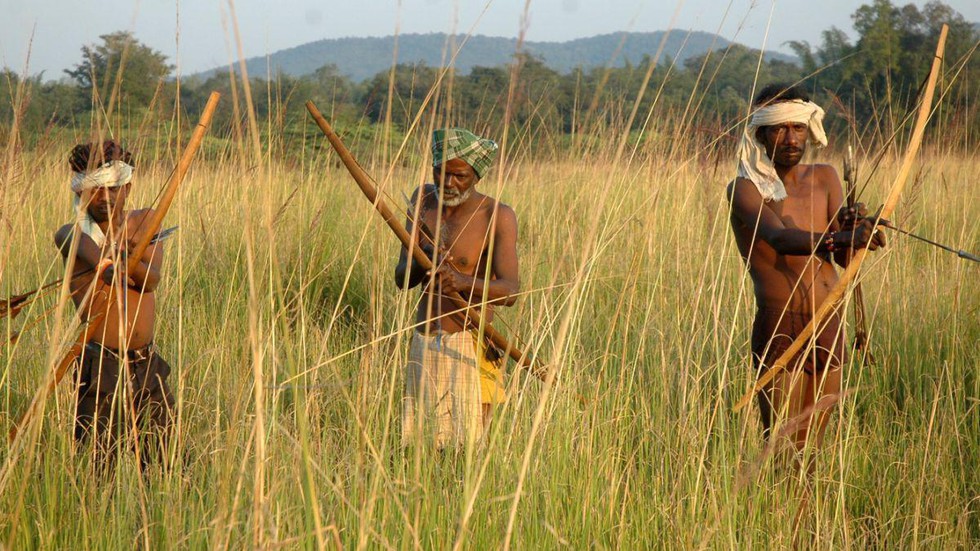
About Chenchus:
- The Chenchus are a Telugu-speaking food-gathering tribe living in the Nallamalai forests of Andhra Pradesh.
- They are listed as Scheduled Tribe in Andhra Pradesh.
- They are a conservative tribal group and have not made many changes in their lifestyle or tried to adapt to modernity.
- They live in an enclosed space and geography, leading a life of an unbroken continuity.
- The Chenchu live life with exemplary simplicity. Most of them still gather food from the forest and roam in it to find things to meet their needs.
- The bow and arrow and a small knife are all the Chenchus possess to hunt and live.
- The Chenchus collect forest products like roots, fruits, tubers, beedi leaf, mohua flower, honey, gum, tamarind and green leaves and make a meagre income from it by selling these to traders and government cooperatives.
- A Chenchu village is known as “Penta”.
- Each penta consists of a few huts that are spaced apart and are grouped together based on kinship pattern.
- "Peddamanishi", or the village elder, is generally the authority to maintain social harmony in a family or a village.
- Generally, his counsel and word are final in all matters of the village.
- Small conjugal families predominate, with women taking equal rank with men and marrying only upon maturity.
- Chenchus worship a number of deities. Chenchus have also adopted certain religious practices from Hindus.
- For ages, the Chenchus have been associated with the famous Srisailam temple (dedicated to Lord Shiva and Devi Brahmaramba) in Andhra Pradesh, situated at the heart of Chenchu land.
- The Chenchus enjoy special privileges at Srisailam temple.


























































































































































.png)
.png)
.png)
.png)
.png)


.png)
.png)
.png)





.png)
.png)






.png)
.png)
.png)
.png)
.png)
.png)
.png)
.png)
.png)

.png)







.png)
.png)


.png)
.png)
.png)


.png)

.png)
.png)





.jpg)

.png)
.png)


.png)

.png)
.png)
.png)

.jpg)

.jpg)


.png)

.png)
.png)
.png)
.png)
.png)
.png)
.png)
.png)
.png)
.png)




.png)

.png)





.png)
.png)
.png)
.png)
.png)
.png)
.png)
.png)
.png)
.png)
.jpg)
.jpg)

.png)
.png)
.png)
.png)
.png)
.png)
.png)
.png)
.png)
.png)
.png)
.png)
.png)
.png)
.png)
.png)
.png)
.png)
.png)
.png)
.png)
.png)



.png)
.png)

.jpg)
.jpg)


.jpg)
.jpg)
.jpg)
.jpg)
.jpg)

.jpg)








.jpg)
.jpg)
.jpg)
.jpg)
.jpg)

















.jpg)
.jpg)







.jpg)


















.jpg)
.jpg)






























































































.jpg)
.jpg)


























.jpg)

.jpg)










.jpg)








.jpg)




.jpg)










.jpg)


















.jpg)












































.jpg)














.jpg)
.jpg)
.jpg)





.jpg)

.jpg)
.jpg)





































































.jpg)


































.jpg)
.jpg)
















































.jpg)












.jpg)


.jpg)




.jpg)
.jpg)
.jpg)

.jpg)
.jpg)
.jpg)
.jpg)

.jpg)
.jpg)
.jpg)

.jpg)
.jpg)
.jpg)
.jpg)
.jpg)
.jpg)
.jpg)
.jpg)

.jpg)


.jpg)
.jpg)
.jpg)
.jpg)
.jpg)
.jpg)
.jpg)
.jpg)
.jpg)
.jpg)











.jpg)
.jpg)





.jpg)
.jpg)
.jpg)
























.jpg)
























.jpg)









.jpg)
.jpg)







.jpg)
.jpg)









































.jpg)
.jpg)
.jpg)
.jpg)
.jpg)

.jpg)
.jpg)
.jpg)
.jpg)
.jpg)


.jpg)
.jpg)
.jpg)
.jpg)
.jpg)

.jpg)
.jpg)
.jpg)
.jpg)
.jpg)
.jpg)
.jpg)
.jpg)
.jpg)
.jpg)
.png)

.png)
.png)

.png)
.png)
.png)
.png)


.jpg)
.jpg)

.jpg)
.jpg)
.jpg)

.png)
.png)
.png)
.png)
.png)
.png)
.png)

.png)
.png)
.png)
.png)
.png)
.png)
.png)
.png)
.png)
.png)





































































-min.png)



.png)




.png)








































